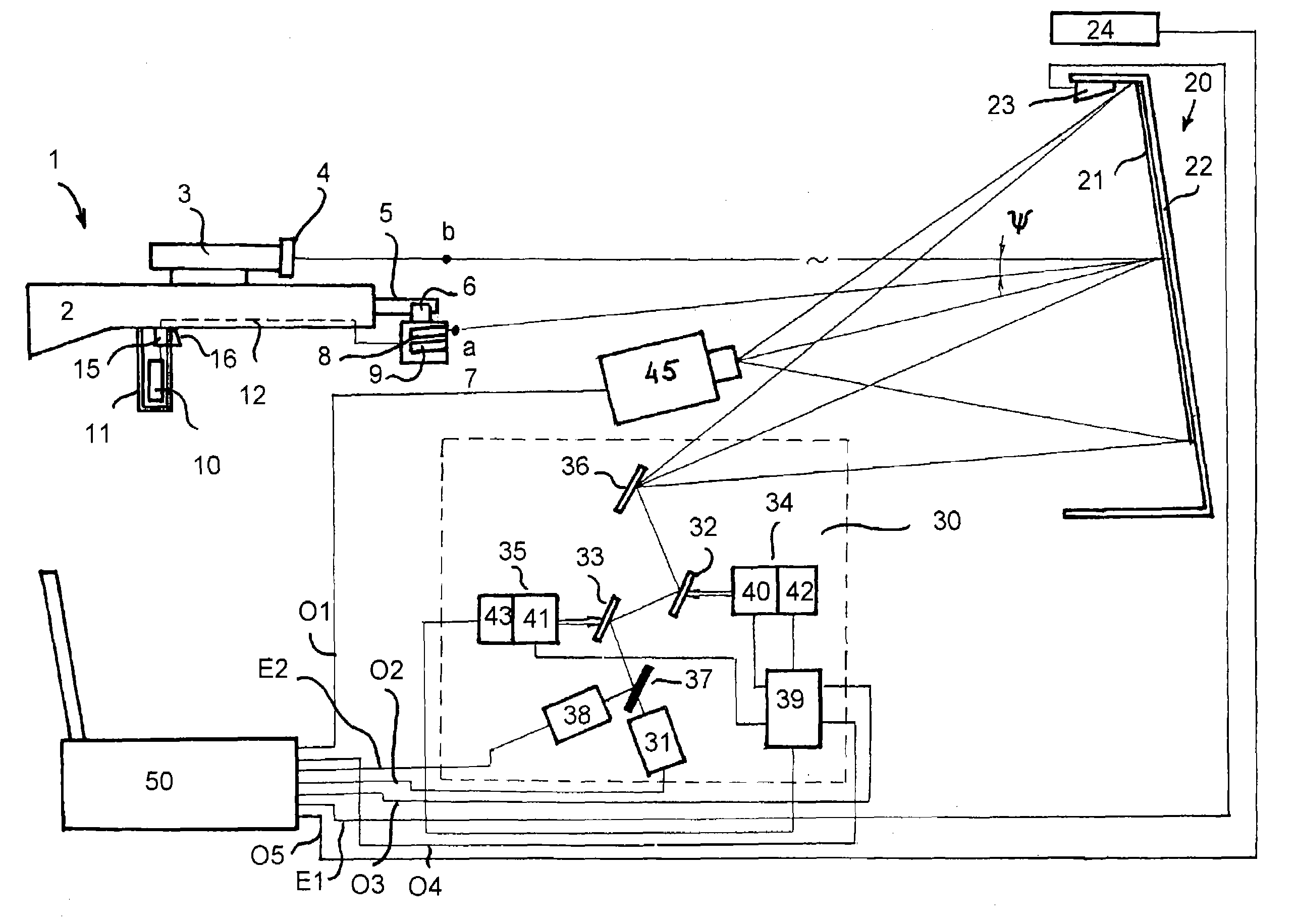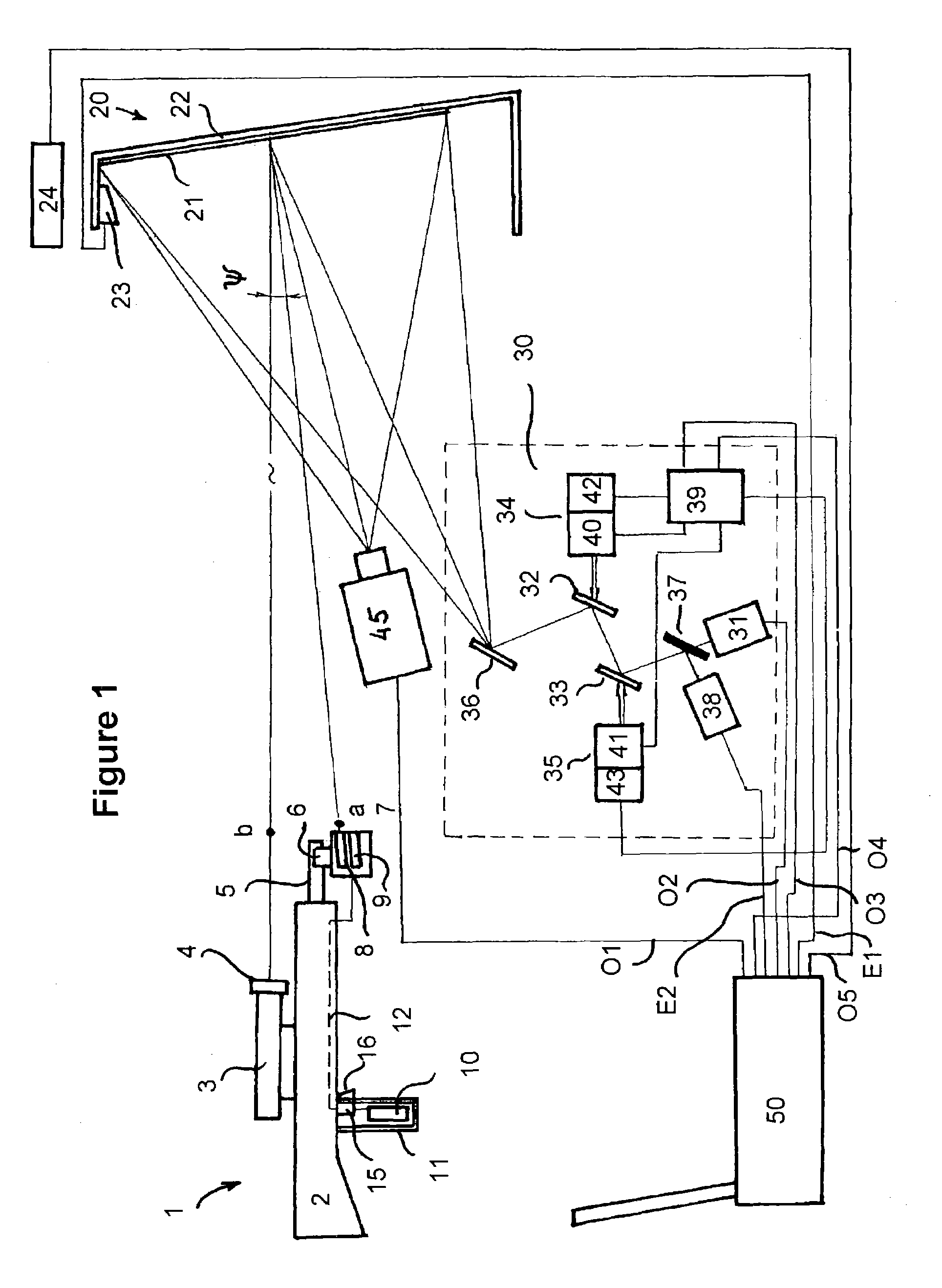Training simulator for sharp shooting
a training simulator and simulator technology, applied in the field of training simulators, can solve the problems of only detecting the light-receiving element, no way of indicating the target hit, complex and expensive electronic training equipment, etc., and achieve the effect of expanding the scope of training
- Summary
- Abstract
- Description
- Claims
- Application Information
AI Technical Summary
Benefits of technology
Problems solved by technology
Method used
Image
Examples
Embodiment Construction
[0029]A detailed description of the present invention follows with reference to accompanying drawings in which like elements are indicated by like reference letters and numerals.
[0030]FIGS. 1 and 3 illustrate the general diagram and the relative positioning of the various units of the proposed simulator. The simulator consists of the weapon unit 1 as well as a screen unit 20, optical unit 30, video projector unit 45, all mounted on the base frame 25. In addition, a computer unit 50 is designed to control all functional aspects of the simulator. The following is a more detailed description of various units of the device.
[0031]The weapon unit 1 includes a weapon 2, which is used as a mounting base for all the other elements of the weapon unit 1. All commonly known standard personal firing weapons such as shotguns, rifles, pistols, and handguns can be used as the weapon unit 2. An optical aiming device 3 and a telescopic viewfinder 4 are mounted on the upper part of the weapon 2. The v...
PUM
 Login to View More
Login to View More Abstract
Description
Claims
Application Information
 Login to View More
Login to View More - R&D
- Intellectual Property
- Life Sciences
- Materials
- Tech Scout
- Unparalleled Data Quality
- Higher Quality Content
- 60% Fewer Hallucinations
Browse by: Latest US Patents, China's latest patents, Technical Efficacy Thesaurus, Application Domain, Technology Topic, Popular Technical Reports.
© 2025 PatSnap. All rights reserved.Legal|Privacy policy|Modern Slavery Act Transparency Statement|Sitemap|About US| Contact US: help@patsnap.com



